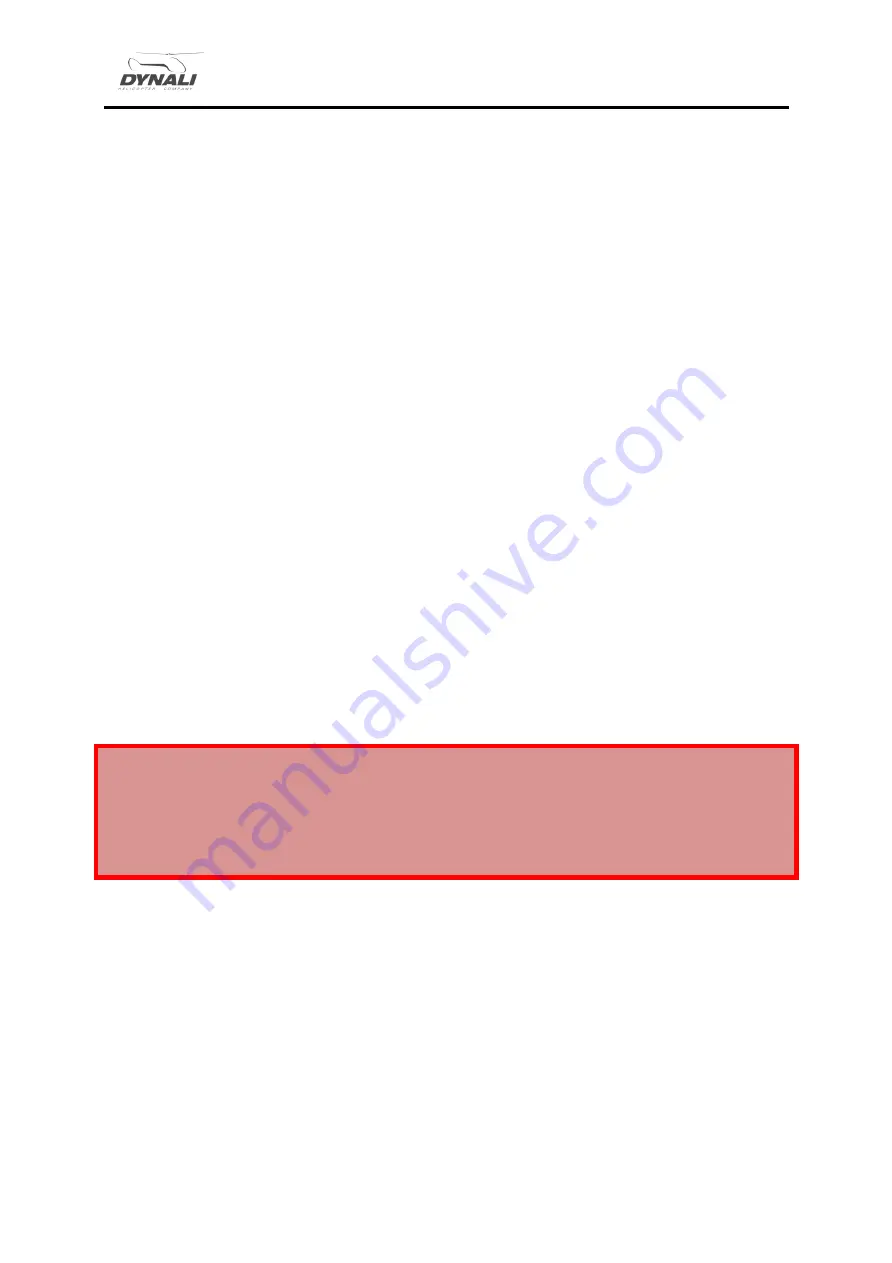
Pilot Operating Handbook
H3 EasyFlyer Sport
SECTION 3
EMERGENCY
Dynali_POH_H3 EasyFlyer Sport Rev. 2.5
– Issue date 30.10.2020 Page
23
Engine failure during take-off acceleration
➢
Maintain directional control.
➢
Attempt a flare to reduce speed.
➢
Lower the collective.
➢
Make sliding landing.
Engine failure at low altitude and low speed
➢
Left pedal down.
➢
Above 5ft, slightly lower collective.
➢
Use collective to cushion contact with the ground.
➢
If insufficient speed to make a quick stop make sliding landing.
Engine failure above 500ft
➢
Lower the collective completely and immediately initiate autorotation.
➢
Cut the throttle and push the left pedal down.
➢
Maintain the speed around 70 to 100 km/h, with 100% rotor RPM.
➢
Use collective to maintain rotor RPM.
➢
Select landing point facing into wind.
➢
Approaching the ground, act on the cyclic stick to flare and reduce rate of
descent WITHOUT RISING THE COLLECTIVE.
➢
At around 10ft, push the cyclic forward to bring the machine to horizontal and
raise the collective to halt the descent.
➢
Preferably land into the wind.
WARNING !
The first “hold” is necessary to reduce the rate of descent. A rotor can only
s2.5 to +3G ; beyond this limit, the helicopter risks “passing through”
the flare, i.e. the sink rate is not sufficiently reduced and the machine impacts
the ground.
















































